Table of Contents
Textbook performance of every pullover exercise variation ever!
The pullover can be an awesome move for CRUSHING the abs and enhancing shoulder mobility, assuming that your technique is on point.
But if you do any of the following:
- Arch your back
- Pull the shoulders back
- Flare your ribs
Then that’s a poor assumption. AKA YOU’RE DOING IT WRONG.
But don’t worry, I got you covered.
Today’s post will go through pullover biomechanics (which will better inform you when and who should get this move), the coaching keys needed to crush the abs and loosen up the upper body, and how to fix common errors with this move.
Check out the video and post below to learn about it.
Pullover exercise biomechanics
The biomechanics behind pullovers is actually quite simple. There are really two upper body actions that occur:
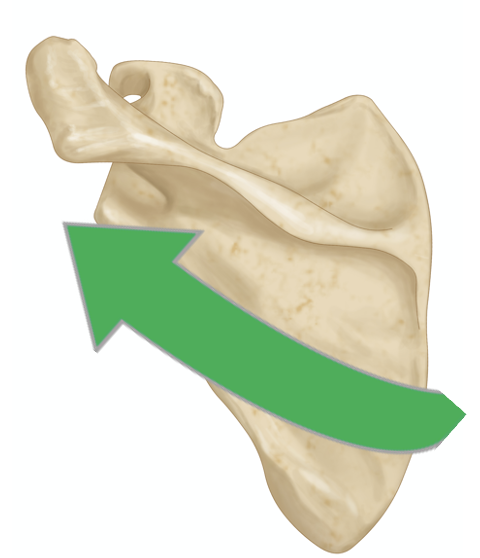
- Scapular protraction and upward rotation
- Progressive shoulder flexion
These movements require two simultaneous actions to occur at the ribcage:
- Lateral ribcage compression (from serratus anterior contraction)
- Anterior thorax expansion (the shoulder flexion range in question requires that to occur)
If you are able to perform these actions, then you ought to get an improvement in the following areas:
- Closing of the lower ribcage (perfect for wide infrasternal angle presentations)
- Increase shoulder internal rotation and flexion (because of the shoulder flexion angle and anterior thorax expansion)
Pullover exercise coaching cues
Here are the major keys that I focus on when coaching any pullover variation:
- Subtle hip tuck (if you need it, a swayback posture would not).
- SLOWLY exhale and reach arms long without crunching (DO BOTH OF THESE SLOW, YO).
- Keeping the long reach, inhale through the nose and move the arm overhead.
- Only go as far as your back stays flat on the surface and lower ribcage stays compressed (don’t force ribs down).
- Exhale and return to the start position.
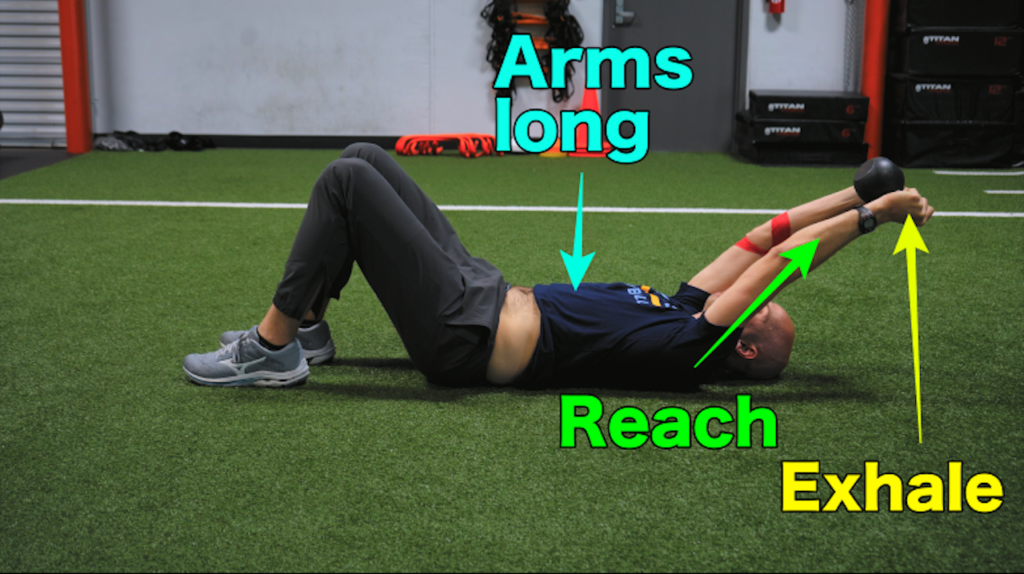
If you were doing this statically, then you would just perform the first 4 steps, then breathe at that overhead position.
Common pullover exercise errors
Sadly, as you can imagine, most people screw…this…up.
The most common screw up I see is losing the reach while moving overhead:
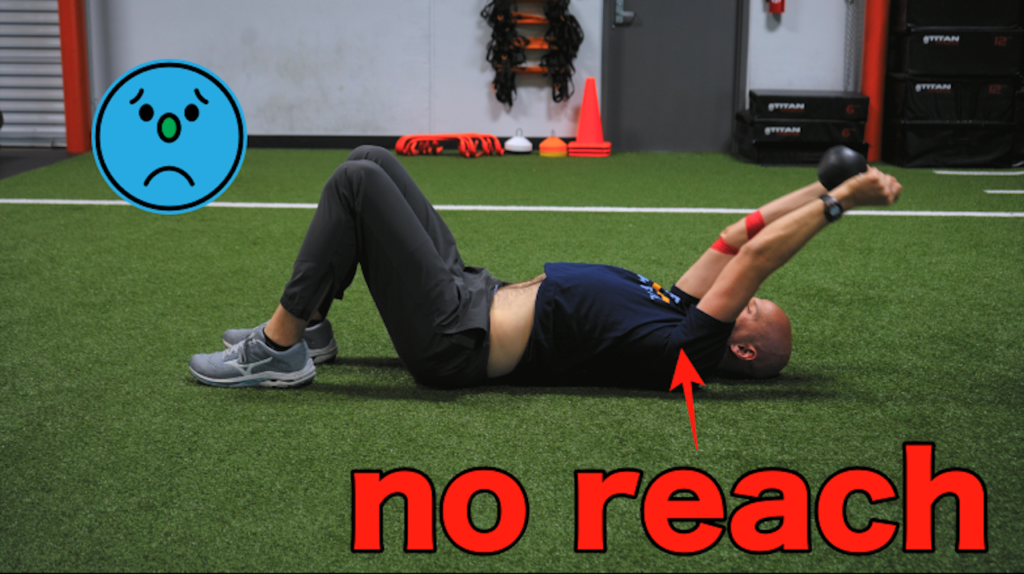
This is an issue because you are not going to get the expansion you need in the upper thorax.
Solution: Reach arm long throughout.
The next issue I see is crunching while reaching:
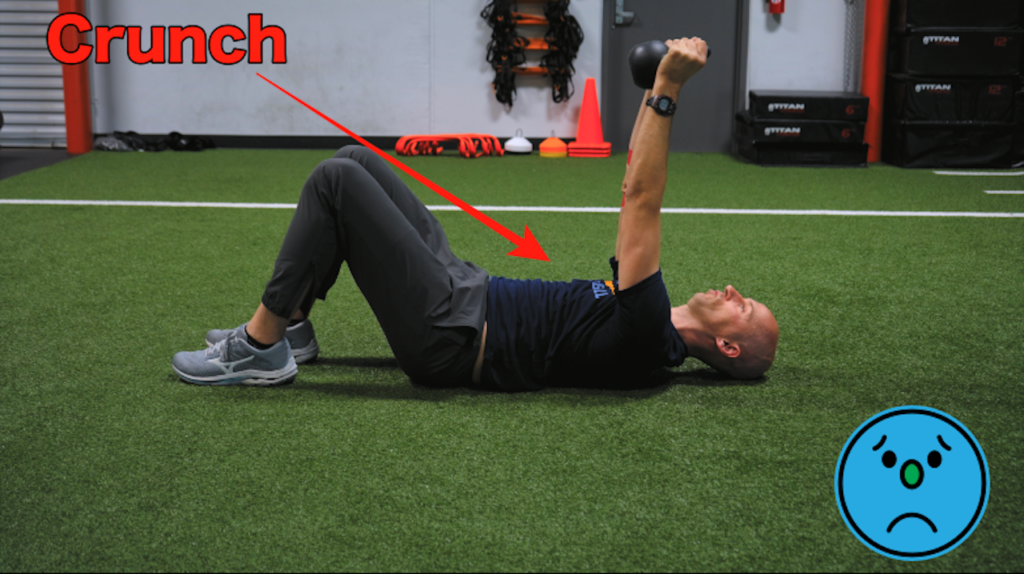
This issue limits anterior thorax expansion.
Solution: Make the reach and exhale soft. Keep the chest parallel to the ceiling.
The last one involves losing lower ribcage position, arching the back as you move overhead:
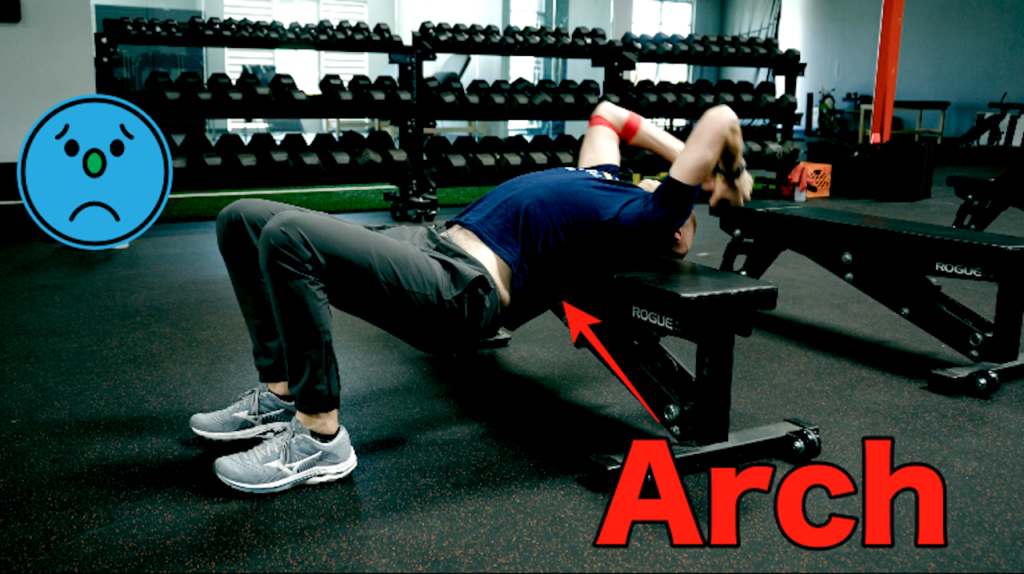
This is an issue because you won’t be engaging the abs the way you want to and you aren’t going to get ANY expansion in the ribcage.
Solution: Keep the tuck and the full exhale. Maintain some ab tension (that you got from the exhale) as you inhale and move overhead.
Pullover exercise variations
The big things that change here are the leg positions. Typically, I will start people in either one of two positions.
If I need to increase hip external rotation, I’ll go with the hooklying pullover that you saw above.
If I need internal rotation, then a 90/90 pullover is a good starting point:
If you REALLY need hip extension and internal rotation go for a hip thrust pullover (PRO TIP: Master hooklying and 90/90 first):
Lastly, if you want to shift the focus towards getting more expansion in the uppermost parts of the anterior thorax (think loss of horizontal adduction, flexion, and more), then you can go with a decline version:
Sum up
There are the major keys for ANY pullover exercise variations.
To recap:
- Pullovers can be used to increase shoulder internal rotation, flexion, and improve exhalation mechanics in the lower ribcage (for wide infrasternal angle)
- Tuck, exhale, reach, and keep arms long as you go overhead
What struggles have you had with pullovers? Are there other exercises that you have a difficult time with? Comment below and let the fam know!
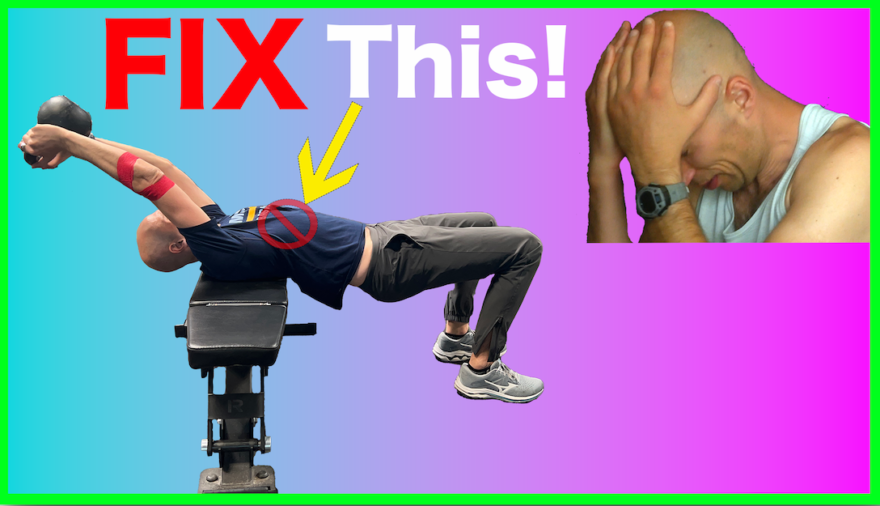
I have issues with left foot pronation and left knee pain. Tibia rotated outwards. My glute max or glute med posterior is kinda hard to access. What can I do for that? I have a PRI orthotics, they helps a ton for left foot. But still, after some time, my left knee is hurting.
It’s really hard to say without seeing you. Issue as in you can’t pronate? I may be putting out a case report on something similar to this.